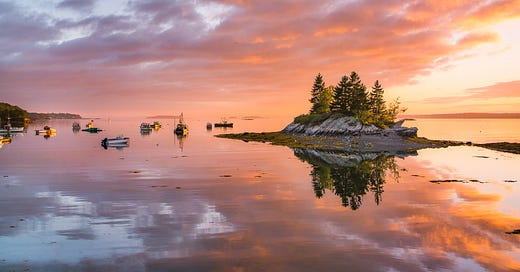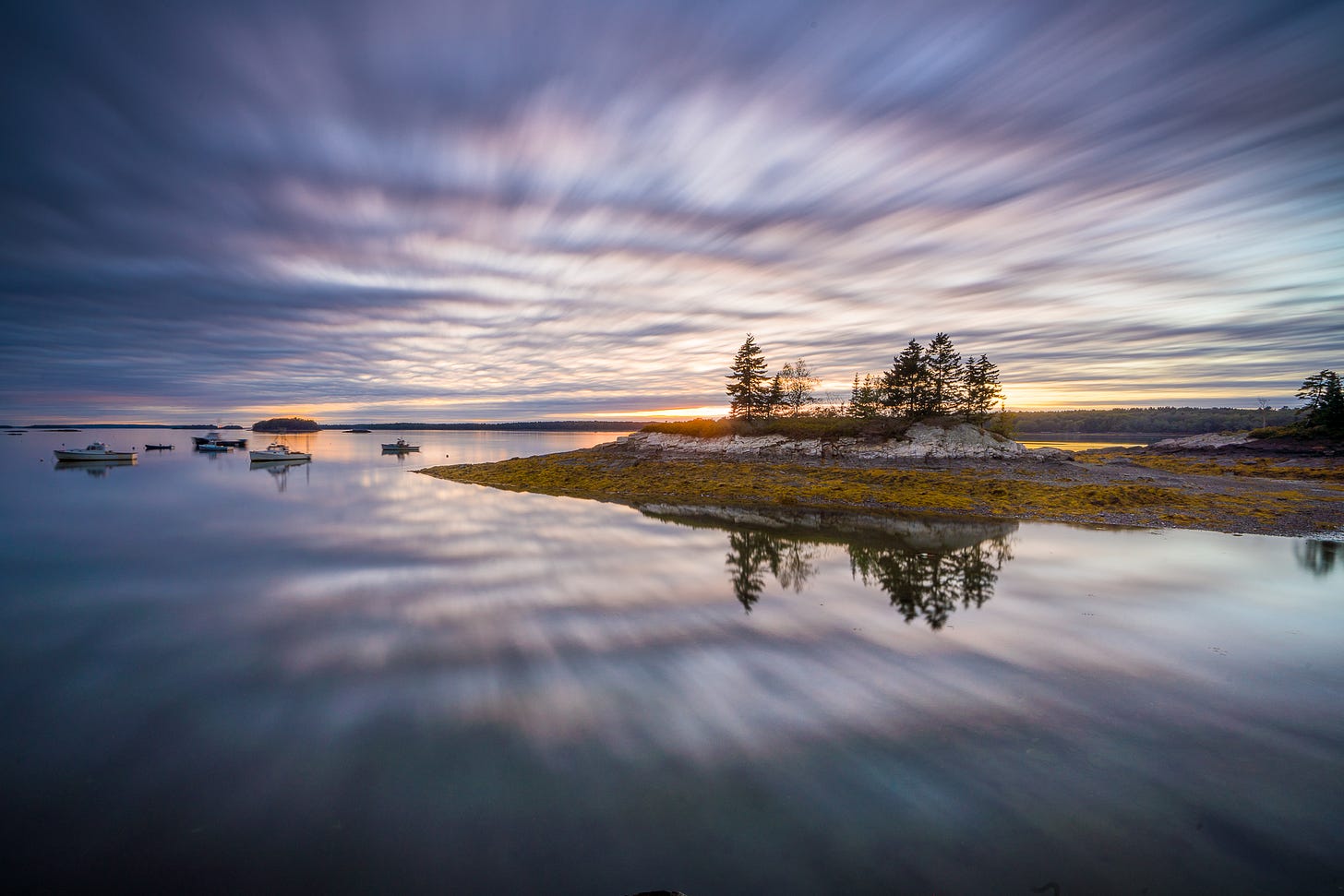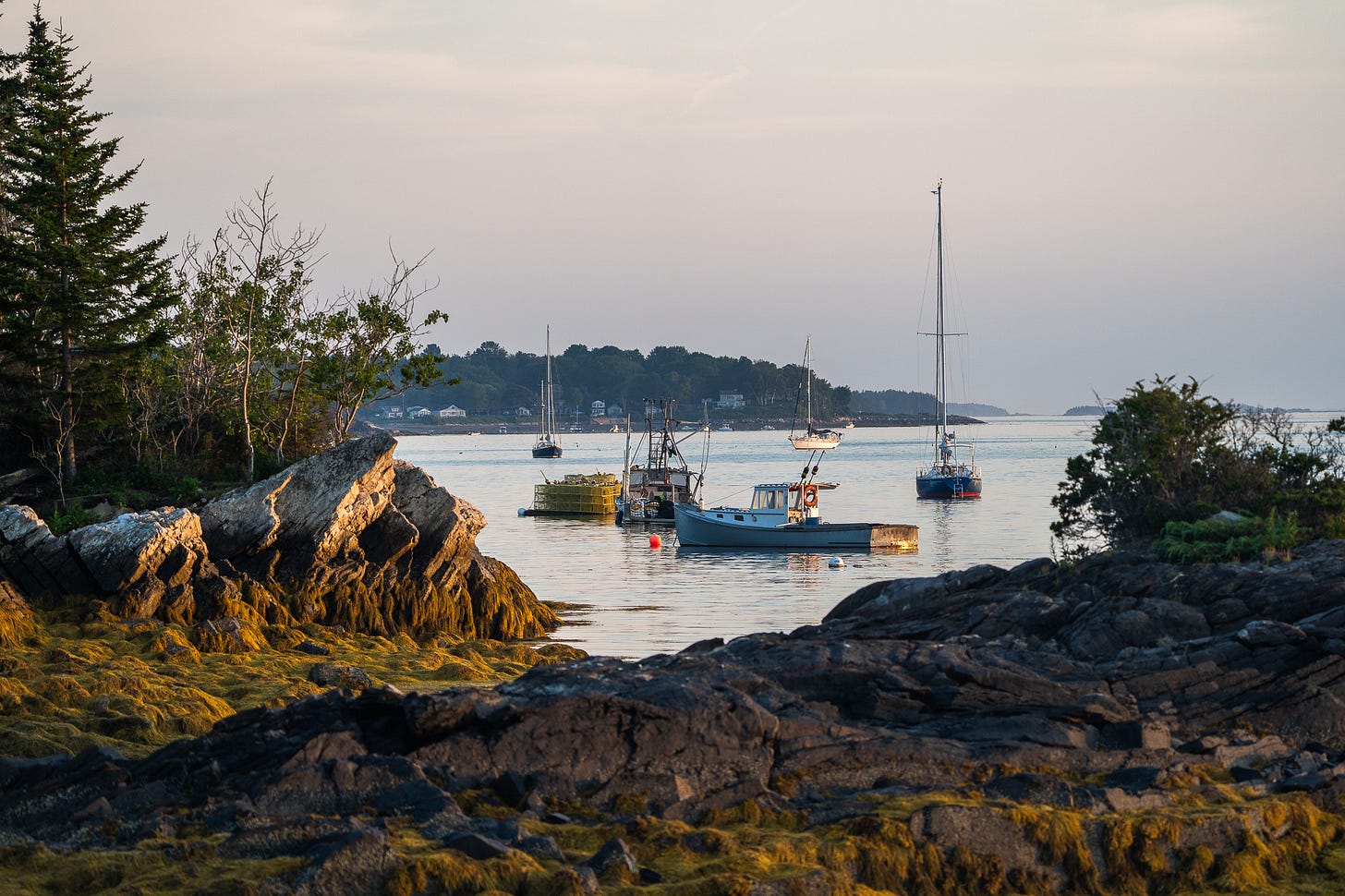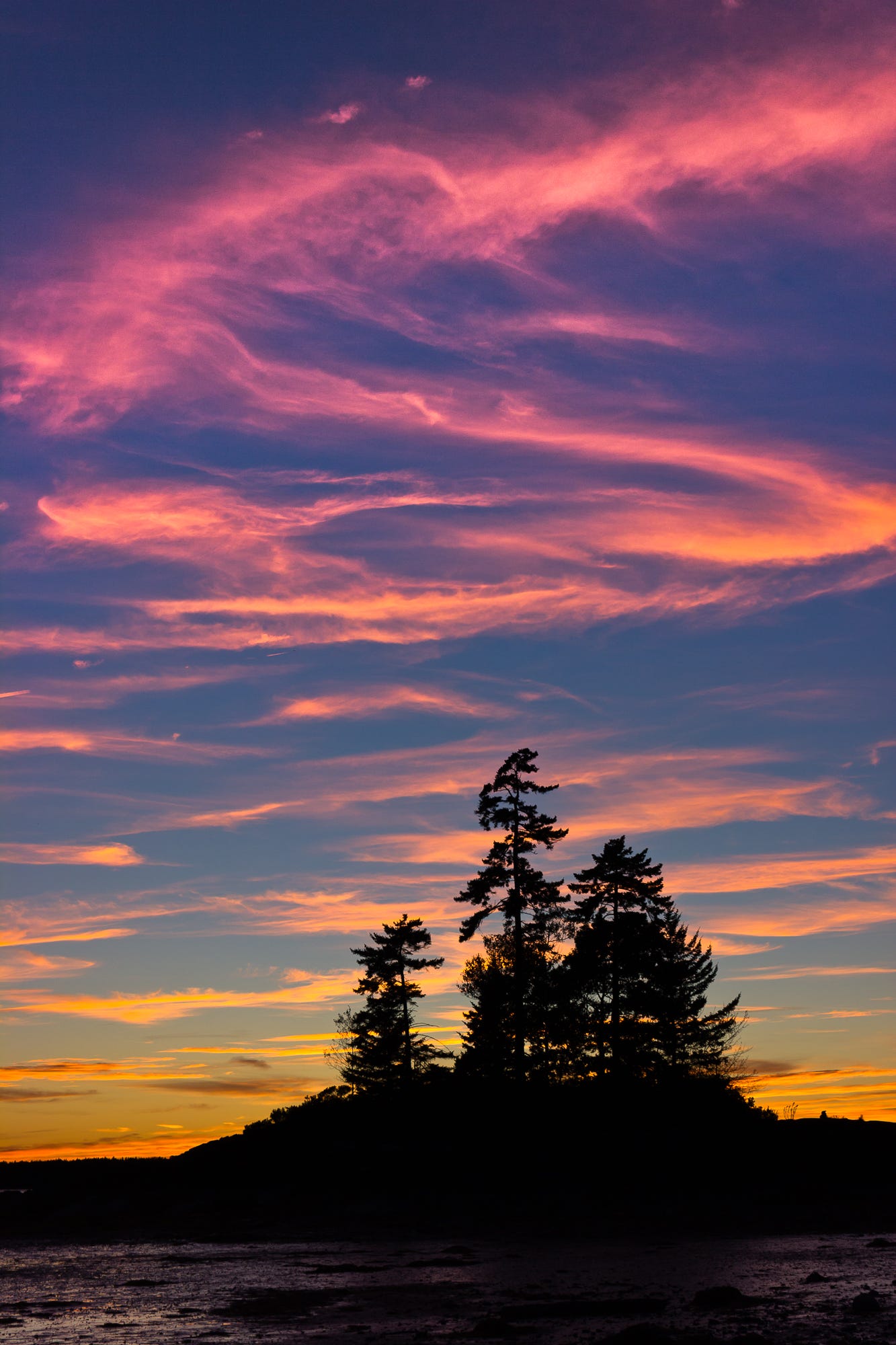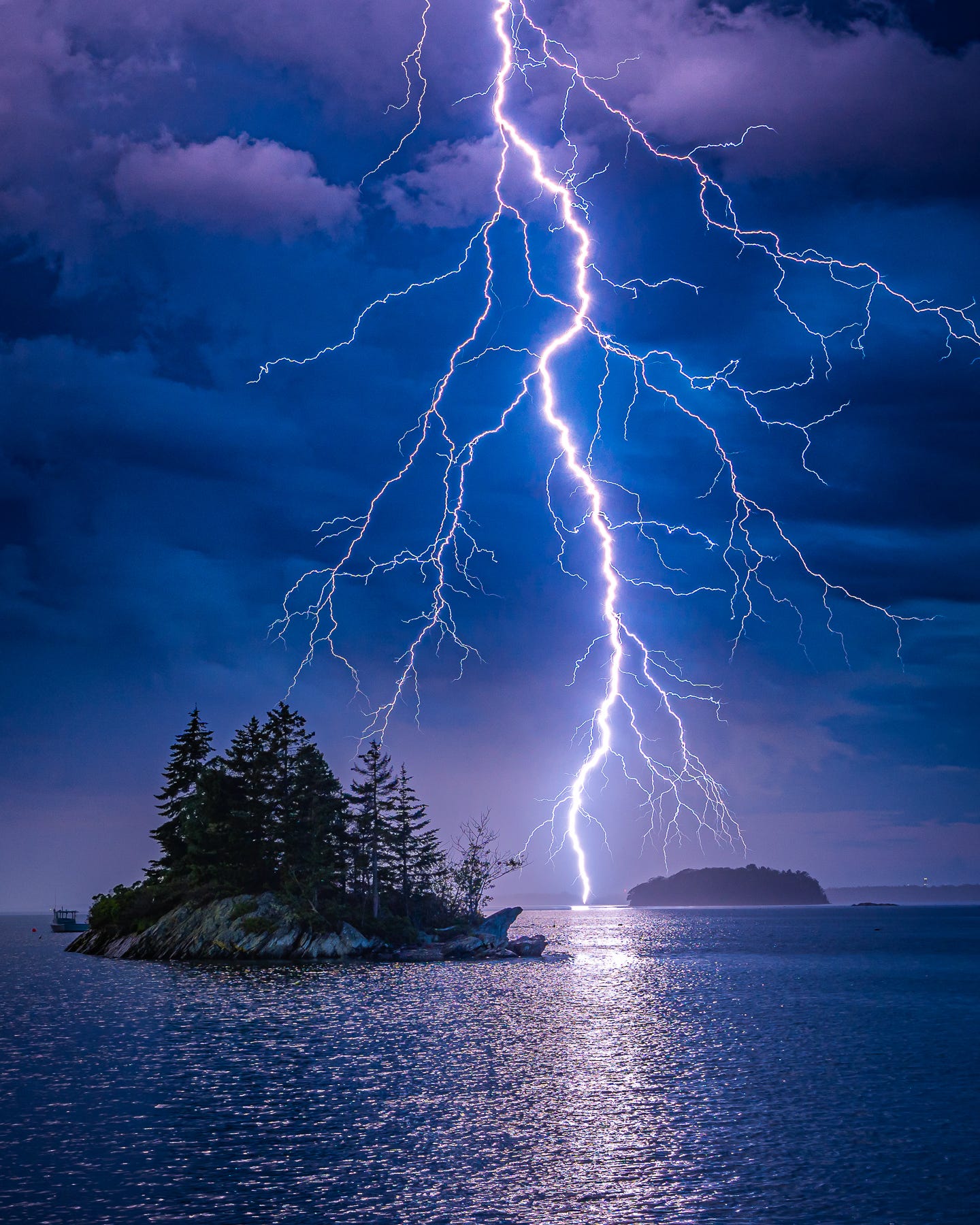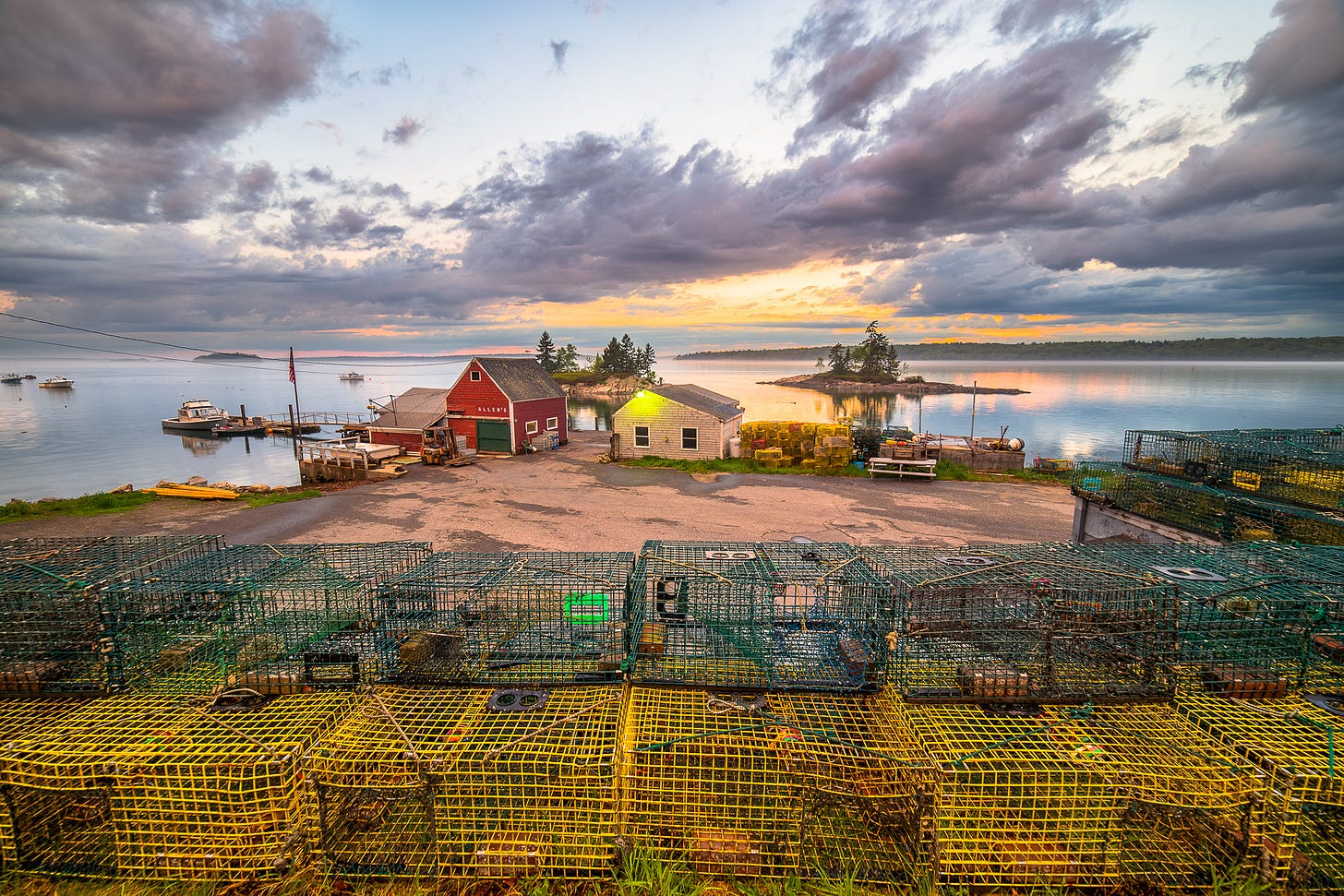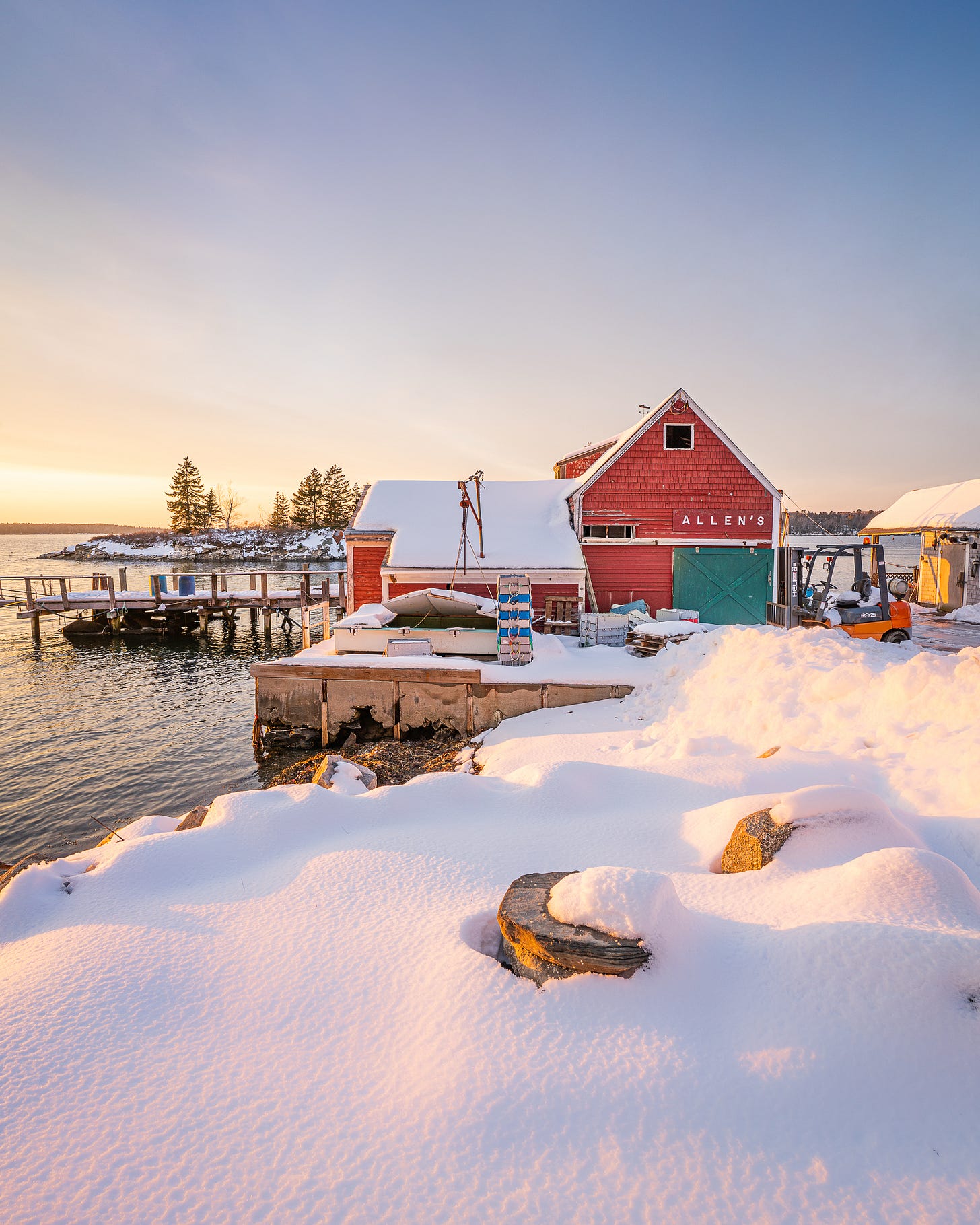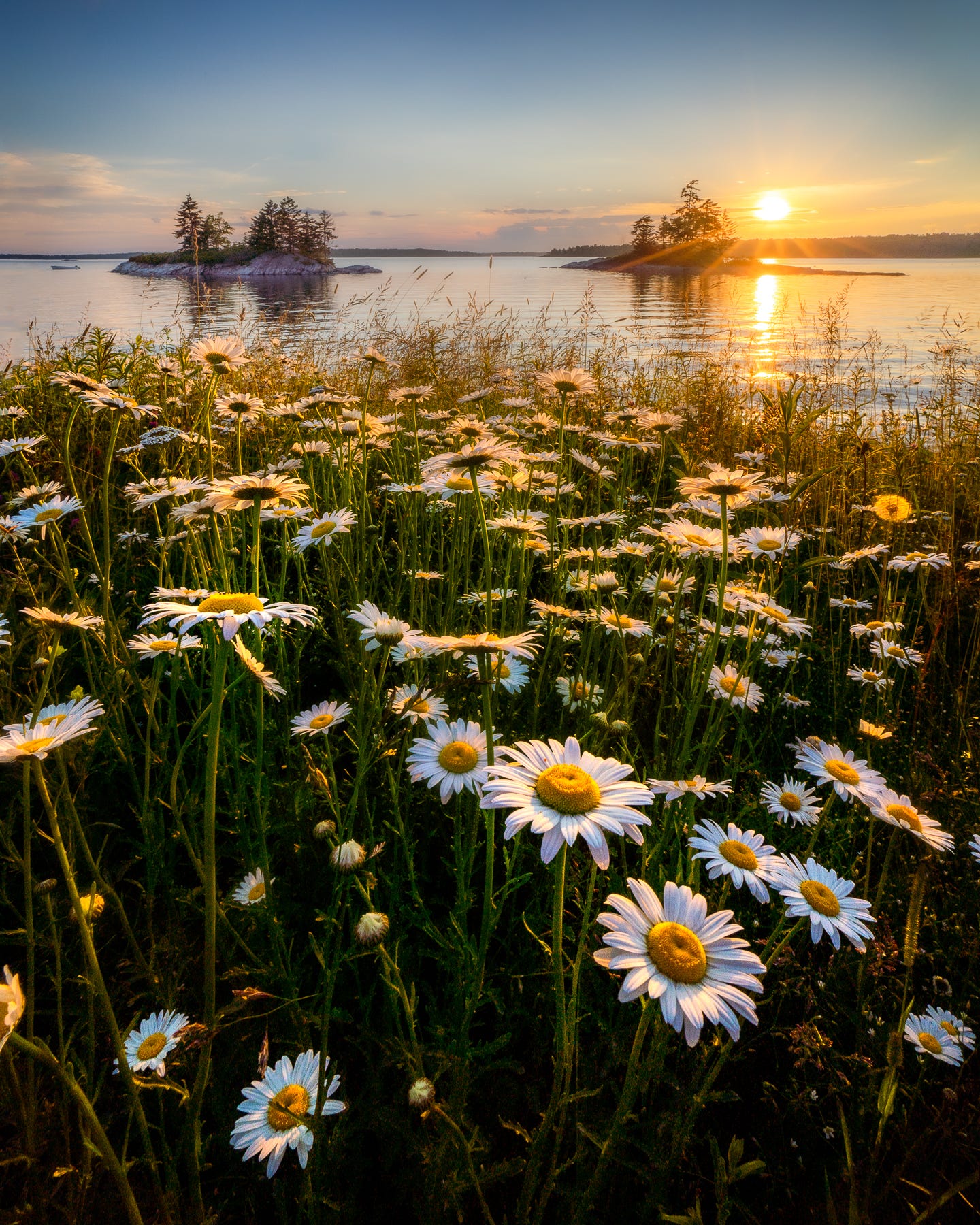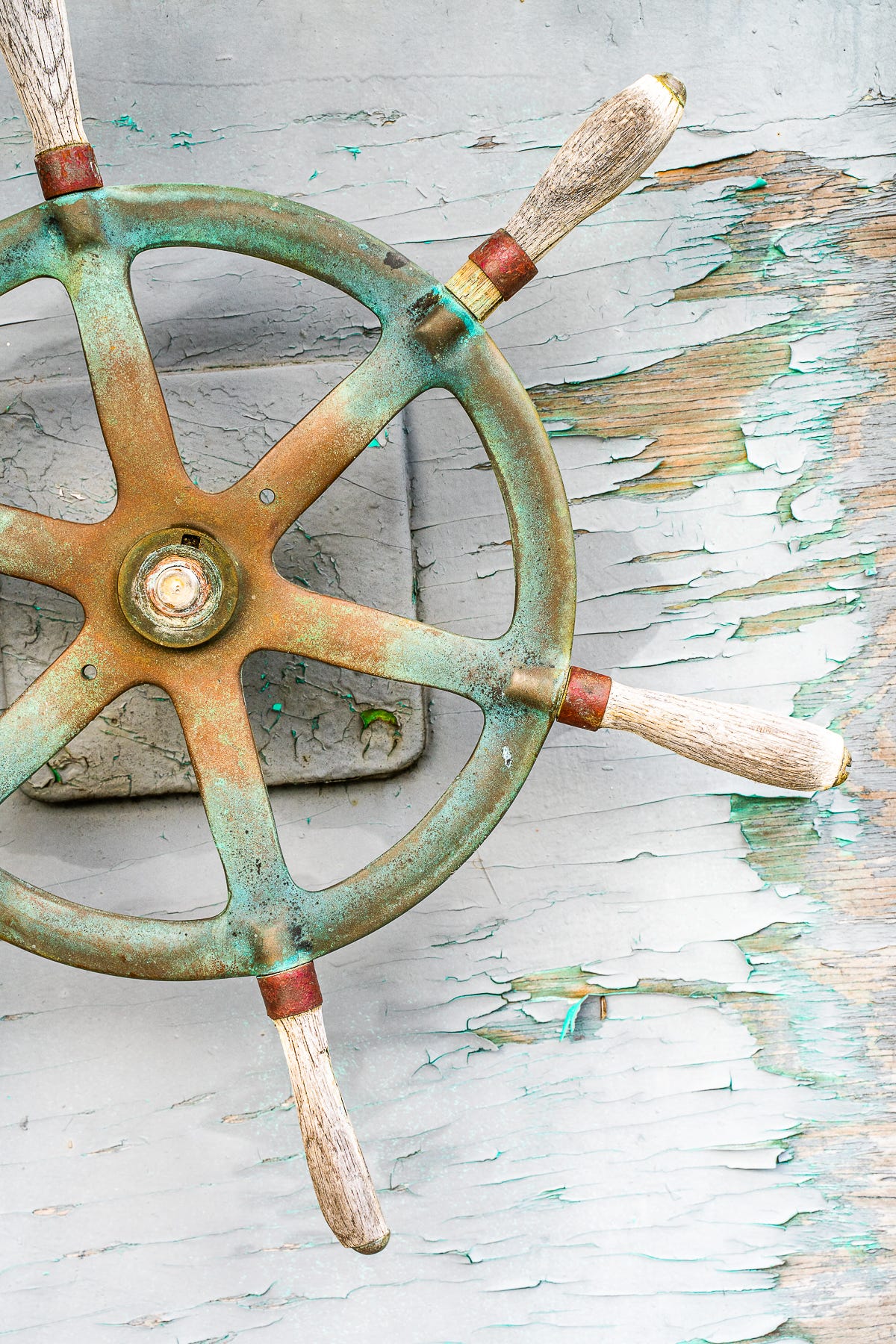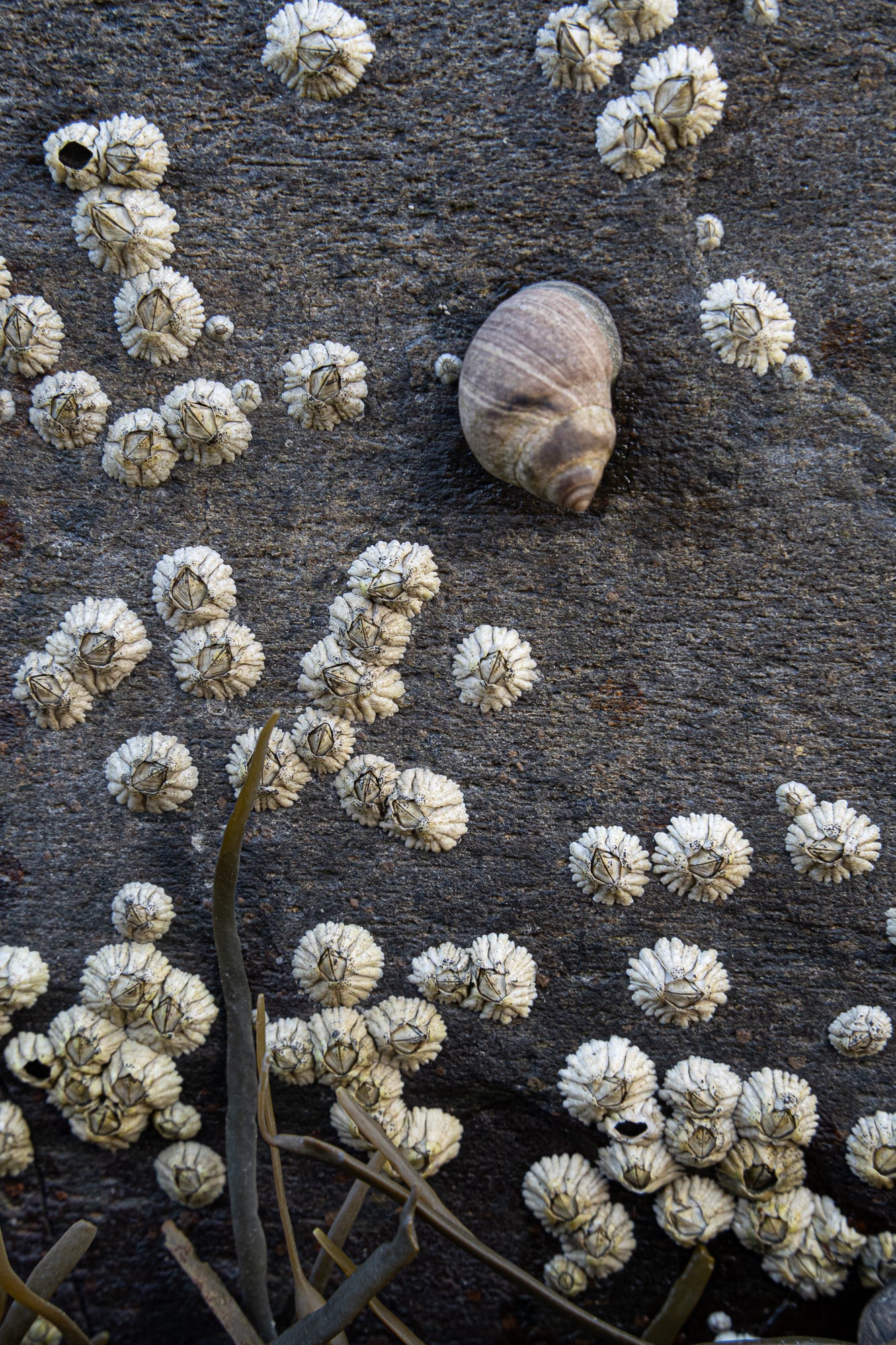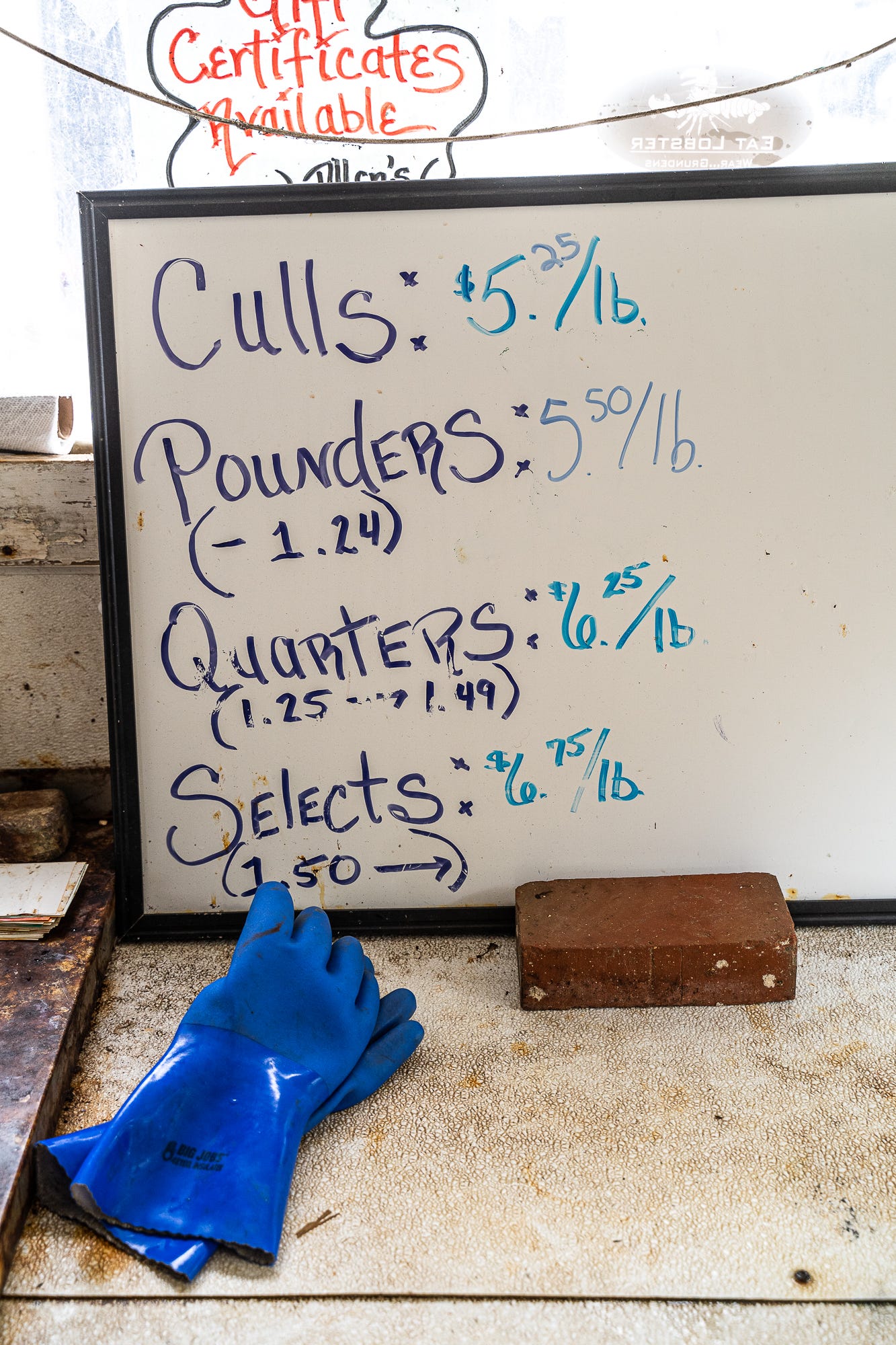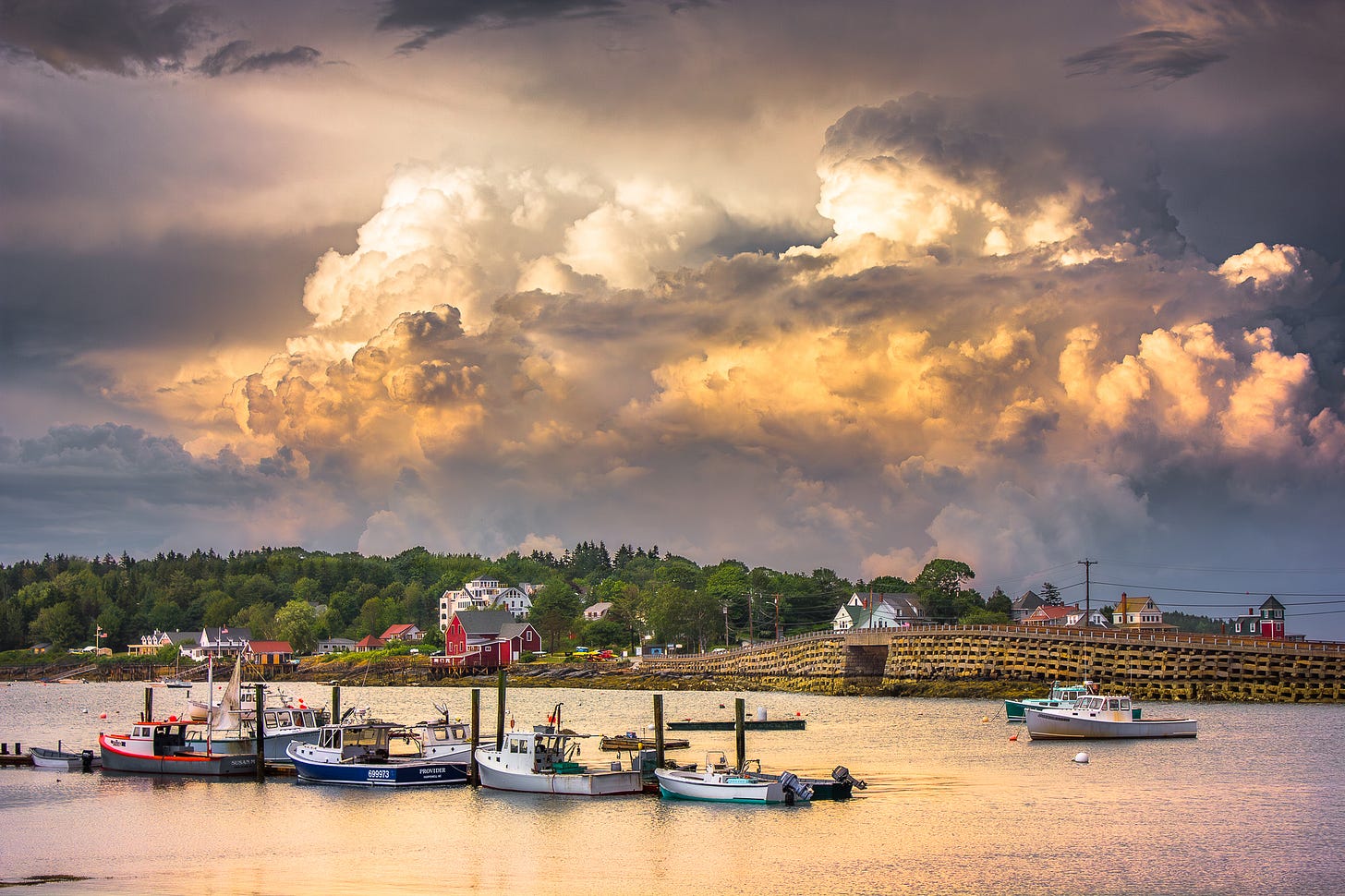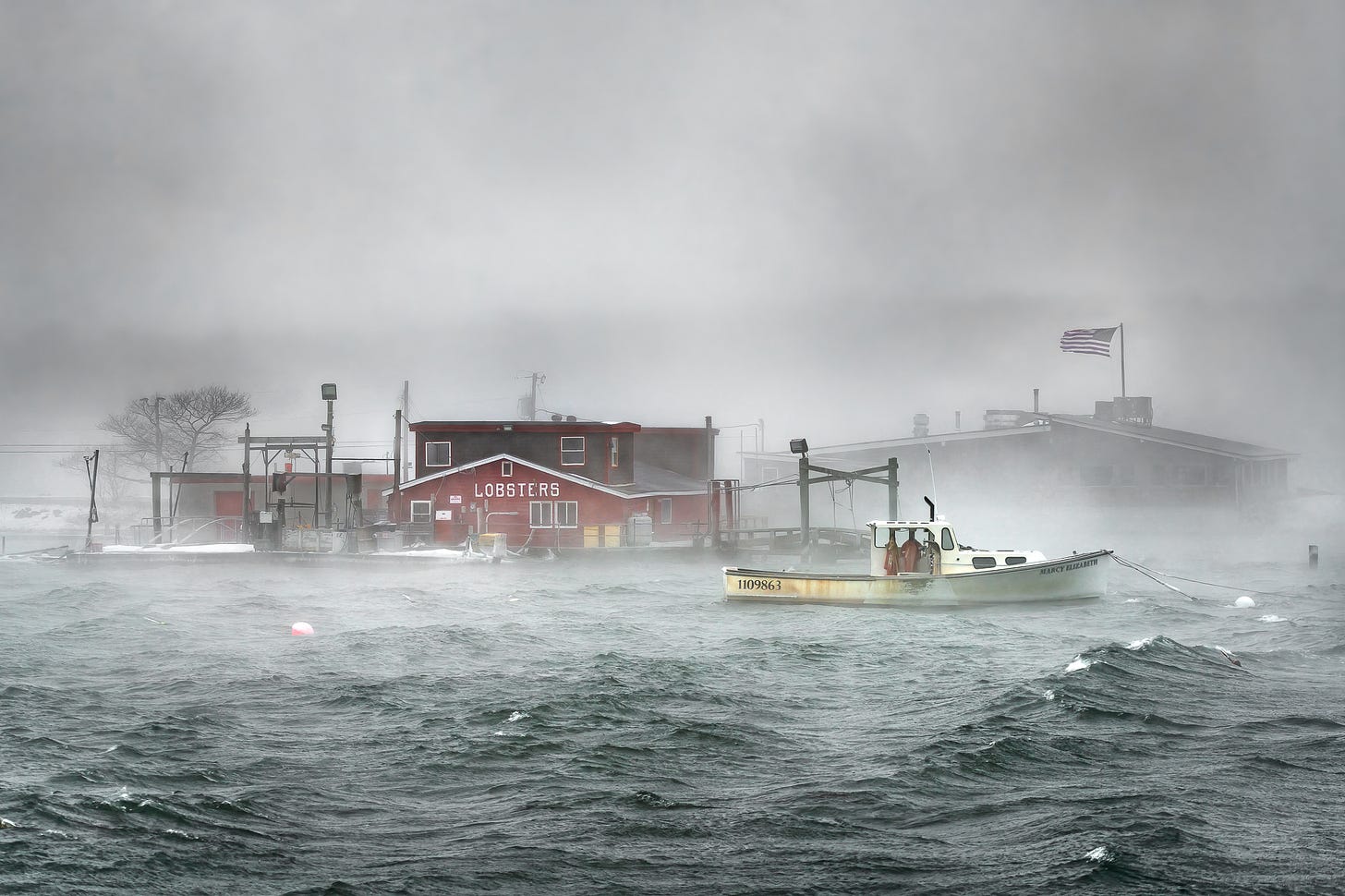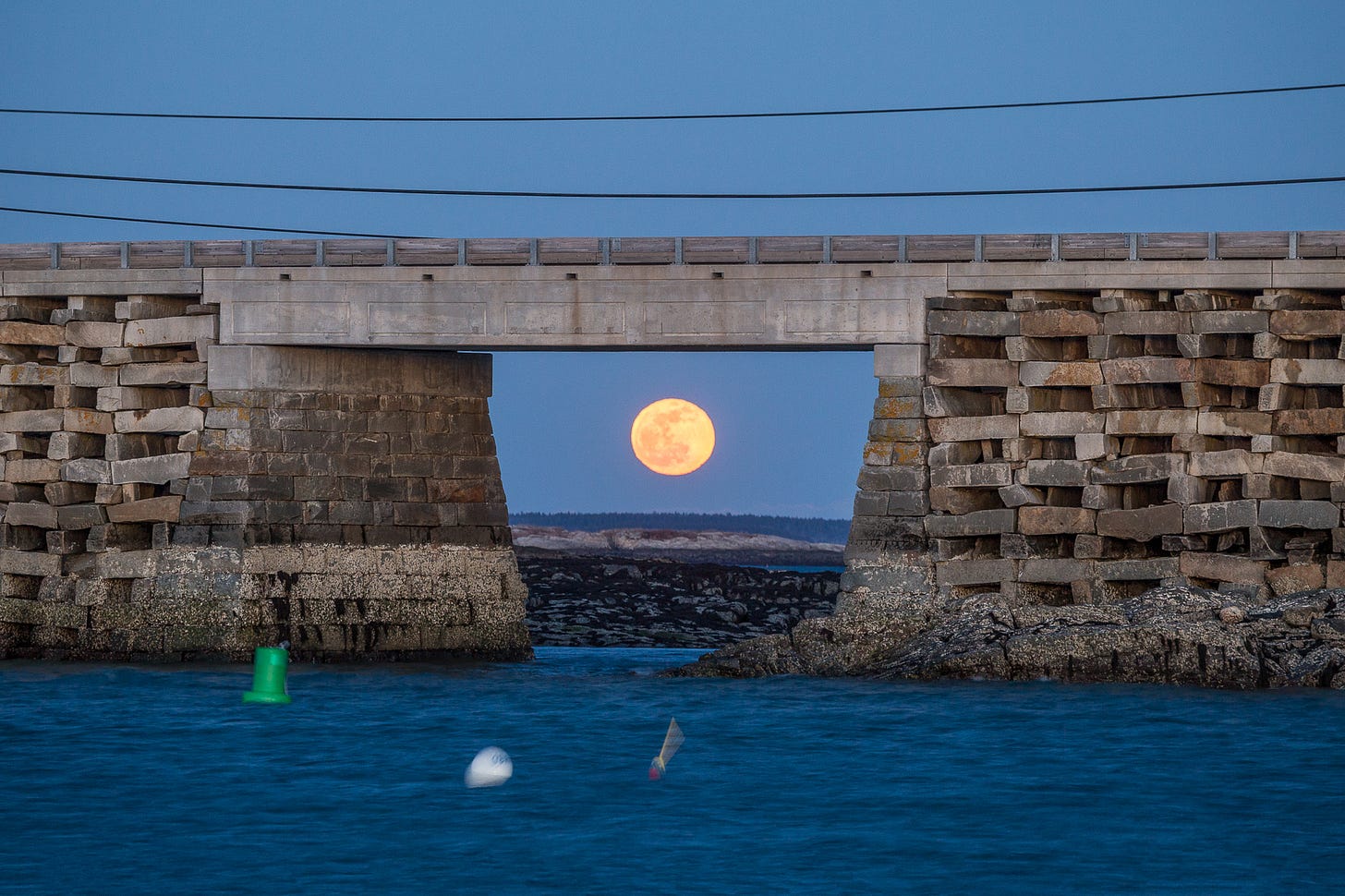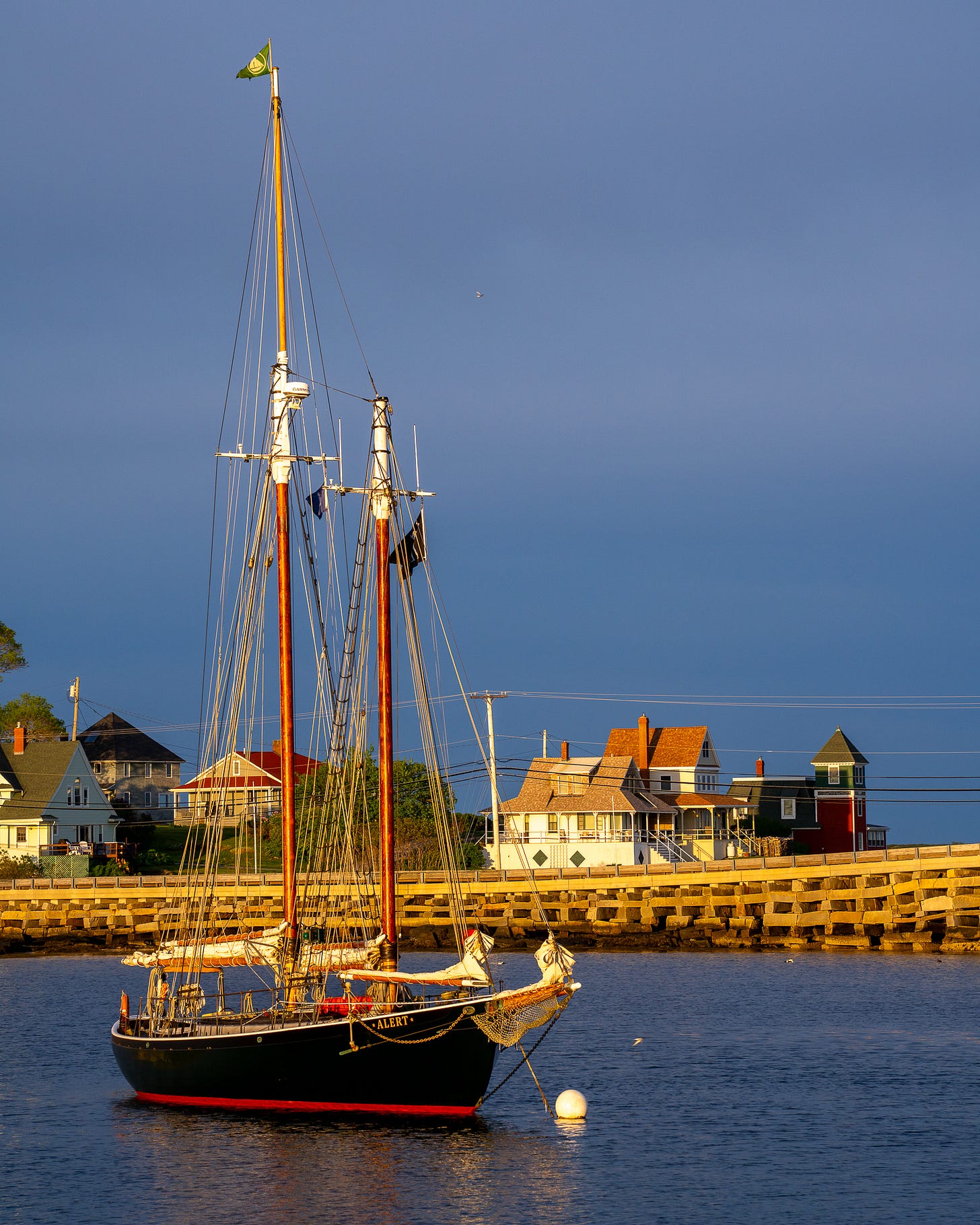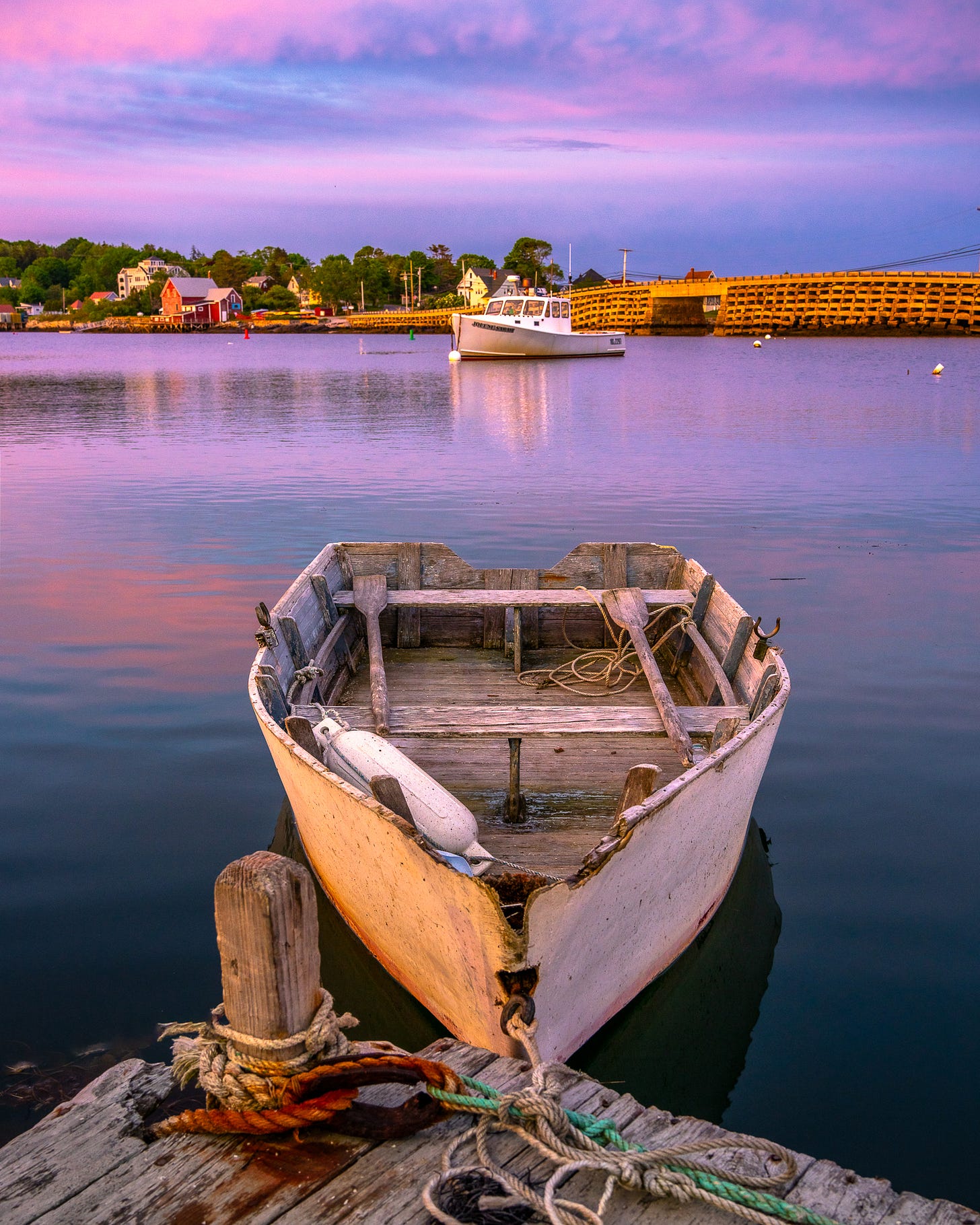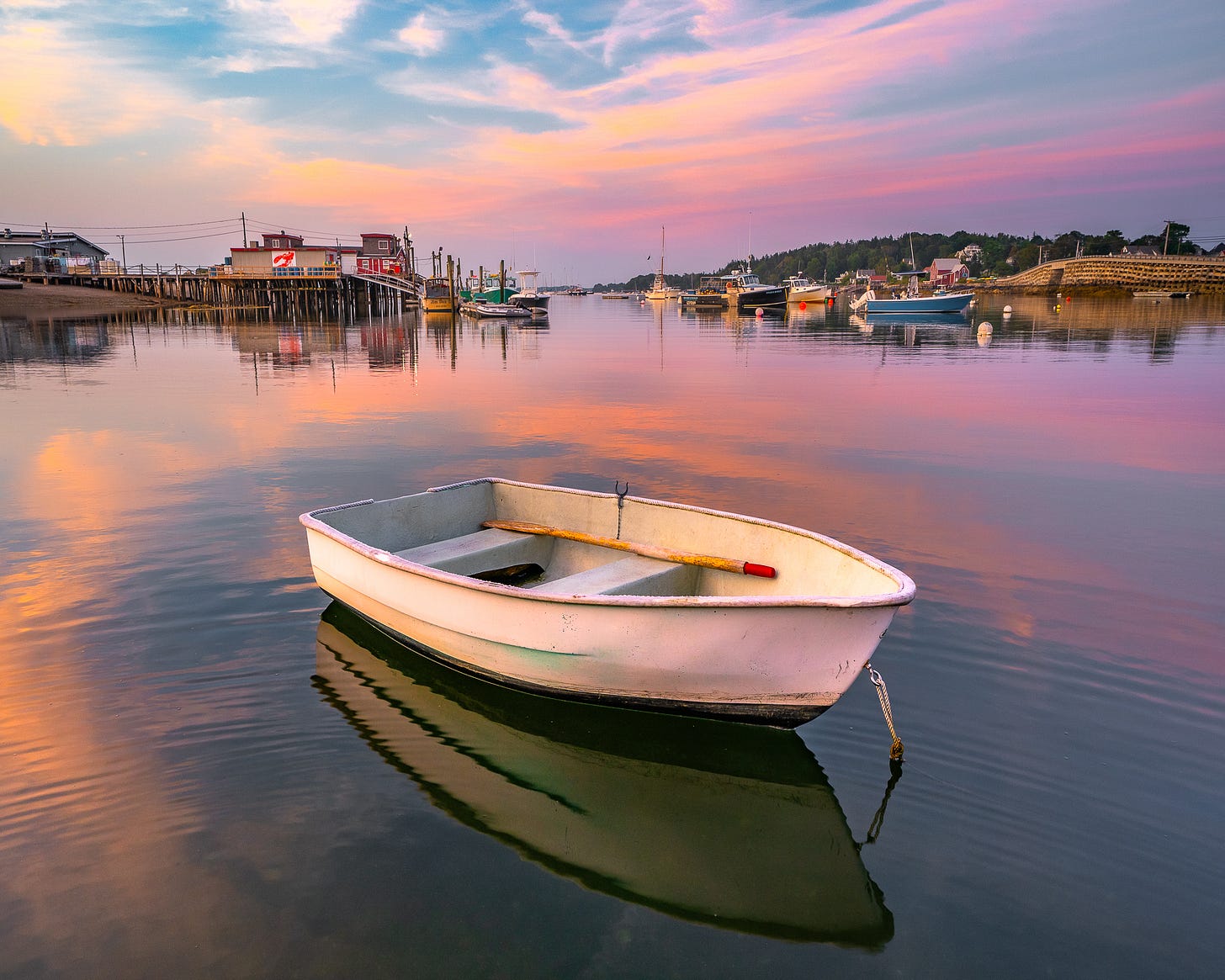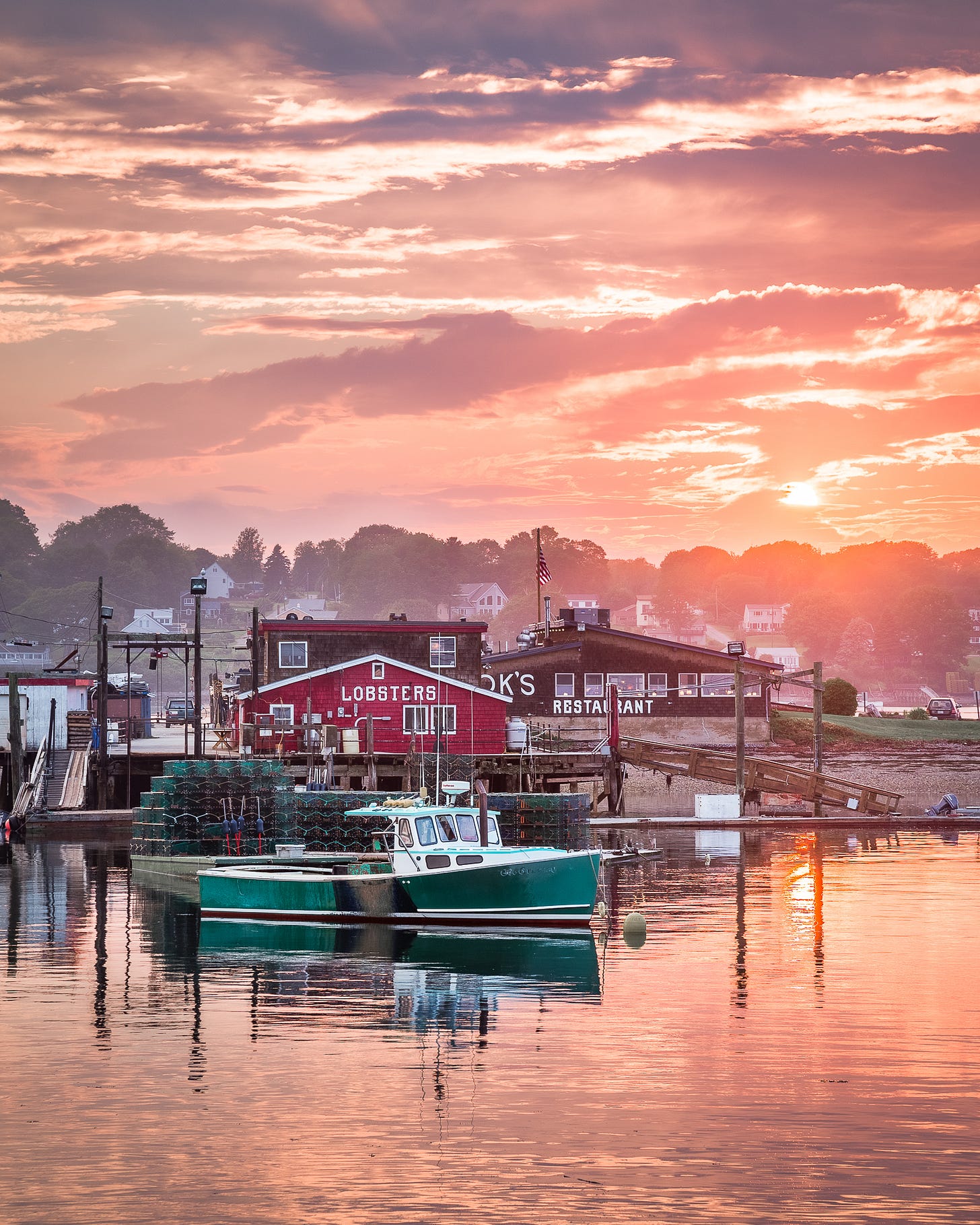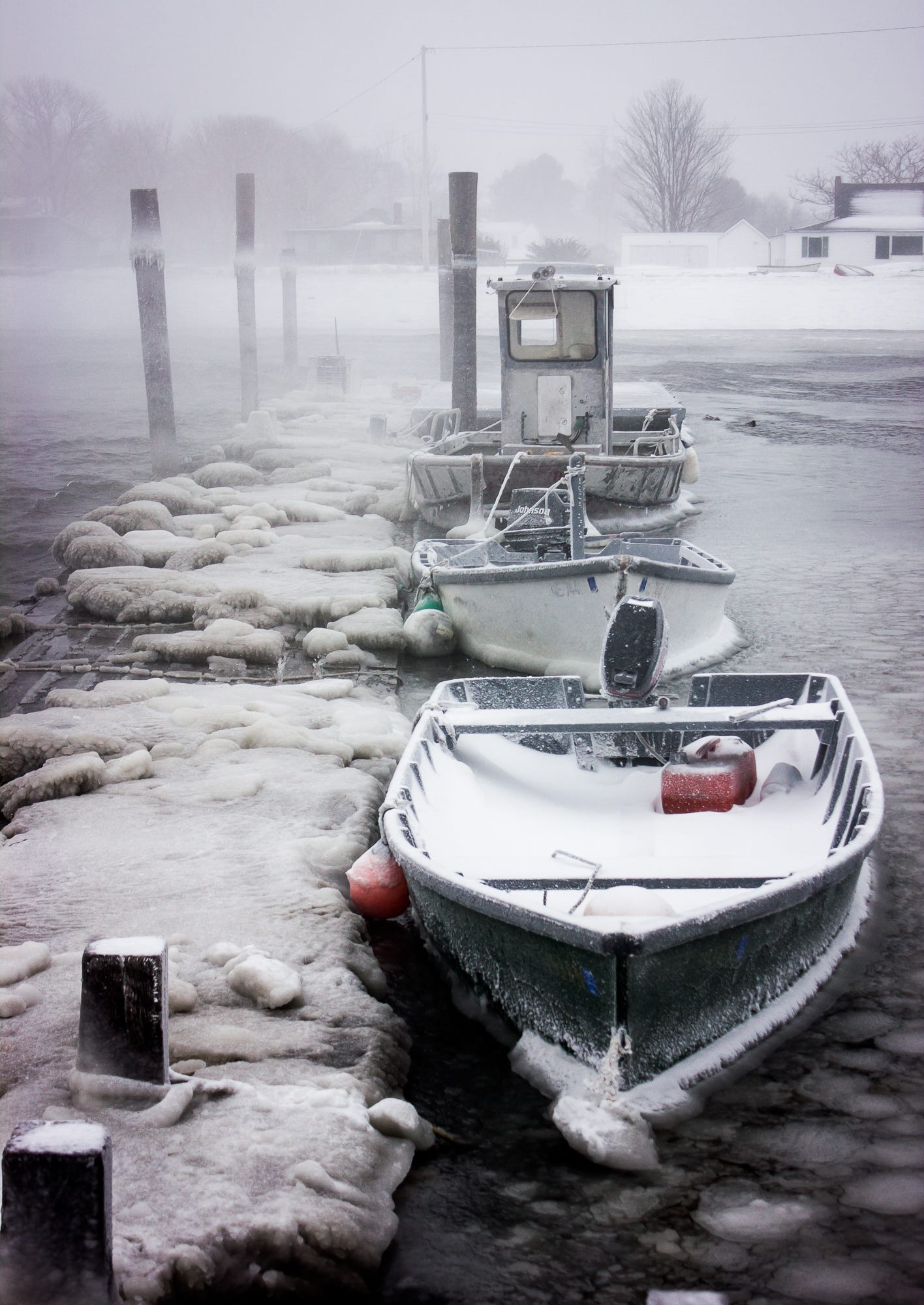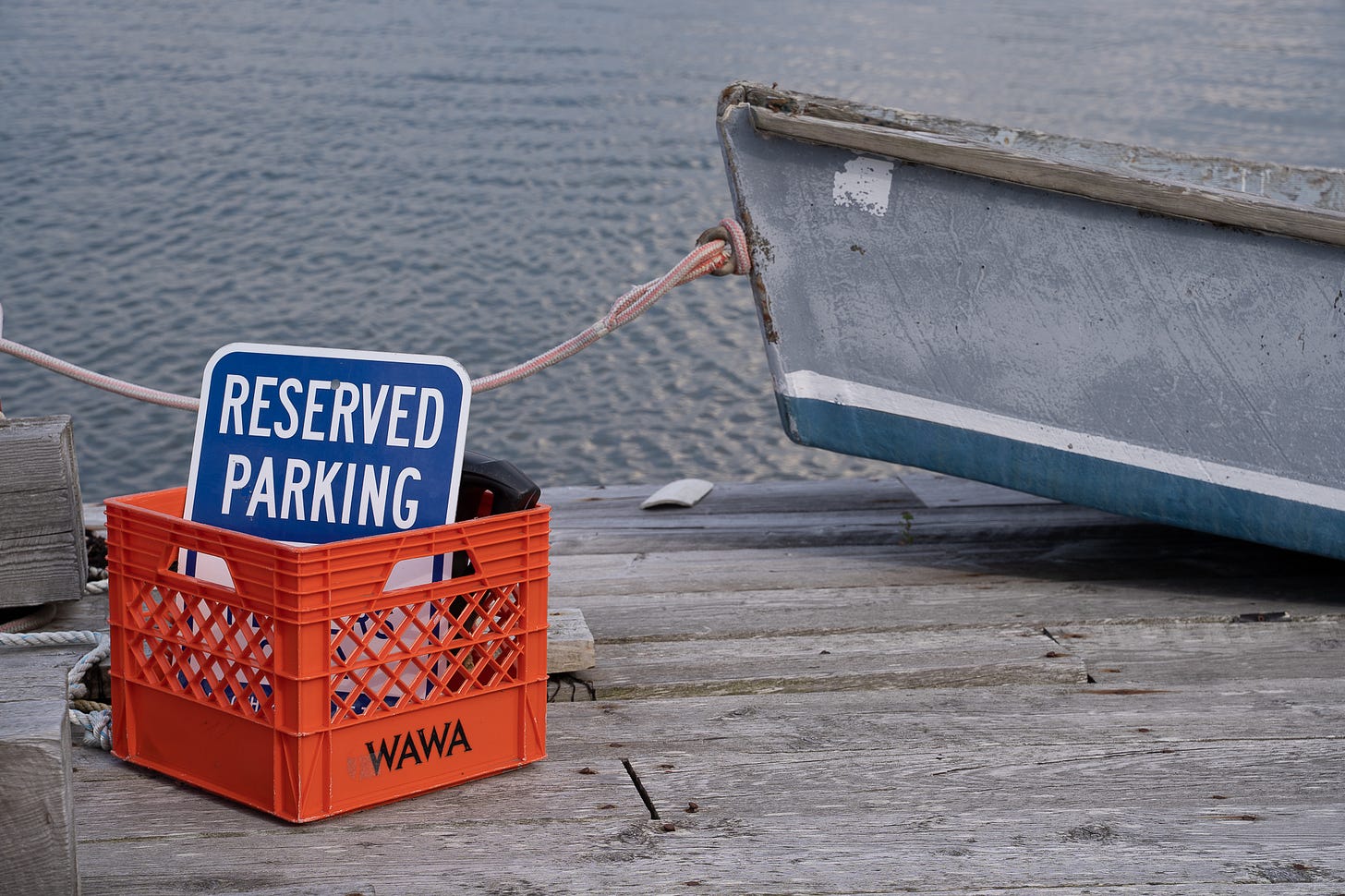Welcome to the continuation of my Guide to Photographing the Maine Coast. We kicked off this series on May 30. If you haven’t read that post, I’d recommend checking it out so that you can orient yourself with the structure of the guide. Each location is listed in geographic order from southwest to northeast along the coast.
Without further ado, here’s the guide to Harpswell, a near and dear favorite area of mine.
1. Lookout Point
Lookout Point is one of the best sunset locations in Maine. The shoreline here faces mostly west, and with two small islands and a working lobster harbor, there’s a lot to see.
The little islands, named Joseph and George, look best at mid to high tide. That’s because at low tide, they aren’t actually islands.
You can see in this image some of the muddy, rocky tidal flats. At low tide, the land in front of and around both islands looks like this, so the only way to get a lot of water in your frame is to walk all the way around onto the docks, which are sometimes roped off.
If you can time your visit with high tide, you’ll have a much easier time getting reflections as well as separation between the two islands.
If not, there are still ways to make interesting compositions around the mudflats.
While sunset is the best time to visit, I’ve found luck visiting on foggy days, and also during incoming thunderstorms.
The lobster pound itself is also interesting. I like the view from the embankment above, usually lined with lobster traps.
I also like the views from the little beach below the pound, and found this to be a good perspective after a fresh snow.
No matter where you stand, there is beauty to behold at Lookout Point, at wide angles..
And longer focal lengths that capture more details…
Gear Tips: Since you can bring a car right down, bring all the gear for this location. Sometimes I like to see if there’s a distant boat or even wildlife, and pull out a 200-600mm lens for that. Otherwise, it’s the standard 24-70mm for most views, and the 16-35mm for images where you have a close foreground that you’d like to accentuate, like the daisies and lobster traps above. If you are a macro lover, there are a ton of details and textures to explore here. You can also experiment with ND filters to smooth out the water. Just watch for rocking lobster boats blurring when you do that.
Best Times of Day: Sunset
Best Times of Year: All
Tides: High - Mid
Access: The addition since 2020 of the Morse’s food truck is nice from the gastronomical perspective, but it has altered the character of this location and made parking more difficult for summertime sunsets. That said, there should be ample parking around the boat ramp area most of the time.
2. Garrison Cove
One summer evening, while photographing on the Cook’s side of the cove, someone walked by me and said, “It looks like a movie set, doesn’t it?” I had never thought of it this way, as everything seems so real and honest, to me, but from the outsiders perspective, I can see why this might feel exotic and quintessentially Maine. Either way, it’s a very special place.
Garrison Cove is the lesser-known name of the small cove at the top of Bailey Island, just across from Orr’s Island. It is home to the Cribstone Bridge and Cook’s Lobster House, two major attractions on the Coast of Maine. One is an engineering marvel, a bridge made up of large pieces of granite, stacked up like jenga blocks, with a roadway on top and small opening for boat traffic to travel through Will’s Gut between the islands. Cook’s is a working lobster pound with an attached restaurant. Lobster boats and the trappings of the trade thereof, along with the two landmarks, provide a photographer’s paradise. In the summer, the Schooner Alert also makes its home here.
I’ve photographed productively here for many years, and what I love about this area is the same for many of the areas in this guide, the fact that I can move around and react to the scenery in accordance with the light and weather, and find interesting things to point my camera at regardless of variables in all three: scenery, light, and weather.
Two of my most well-known images, the one above looking at the Cribstone Bridge and Orr’s Island from near Cook’s, and the one below looking at Cook’s from the Cribstone Bridge, are taken in wildly different seasons and weather conditions, in opposite directions. I love that.
In the spring and summer, the moon comes up at such an angle that it can be captured through the opening in the bridge, as seen from the peninsula above Cook’s.
Here’s the Schooner Alert at mooring, with the iconic cottages at the south end of Orr’s Island behind the Cribstone Bridge.
In addition to this beautiful schooner, many small dinghies can be found parked against the docks.
And also floating free in the water.
I encourage visiting at sunset with an open mind to the possibilities of light in all directions.
Visiting in the off-season works here, too, as many of the boats stay in the water, even when the water turns to ice!
It’s not all drama, though. You can sometimes find humor and nuance in the details of life around here.
Keep reading with a 7-day free trial
Subscribe to Benjamin Williamson Photography to keep reading this post and get 7 days of free access to the full post archives.

